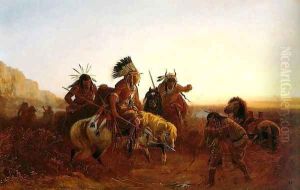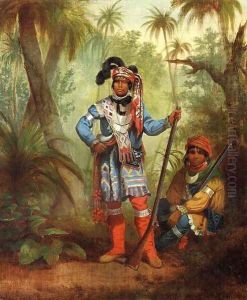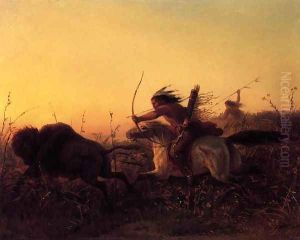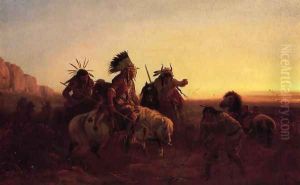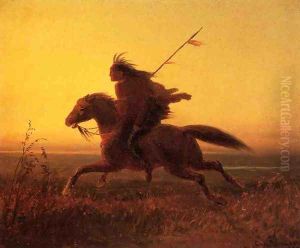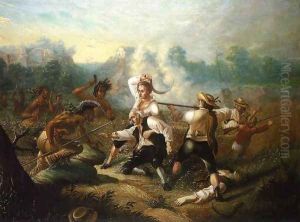Carl (Charles Ferdinand) Wimar Paintings
Carl Wimar, also known as Charles Ferdinand Wimar, was a German-American artist known for his portrayal of Native Americans and the landscapes of the Western United States. He was born on February 20, 1828, in Siegburg, near Bonn in Germany. At the age of fifteen, Wimar emigrated to the United States, settling in St. Louis, Missouri, which was then considered the frontier and a gateway to the West.
Wimar's interest in the American West and its indigenous people was sparked by the tales and sketches of George Catlin, and he became determined to record the life of the Native Americans and the rapidly changing frontier. He began his artistic training in St. Louis and later returned to Germany to study at the Düsseldorf Academy, one of the leading art schools of the time, where he was influenced by the Düsseldorf school of painting, which emphasized detail and the use of light.
After returning to St. Louis in 1856, Wimar embarked on several trips to the Western United States to live among Native American tribes and to document their way of life, which was under threat from the westward expansion of European-American settlers. These experiences provided the subjects for many of his most important works. Wimar's paintings are characterized by their dramatic scenes, attention to ethnographic detail, and romanticized view of the American West.
Wimar's health began to decline in the late 1850s, and he died prematurely at the age of 34 on November 28, 1862, in St. Louis. Despite his short career, Wimar left a significant impact on the genre of Western art. His works are considered important historical records of the time and are held in various American museums, including the Saint Louis Art Museum and the Gilcrease Museum in Tulsa, Oklahoma.
